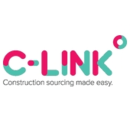The benefits of e-procurement in construction
Paul Heming, founder of procurement platform C-Link discusses the benefits of E-procurement.
The term 'E-procurement' refers to tendering processes carried out online and through information and networking systems, and may include; E-tendering, E-auctioning, E-invoicing, E-payment and so on.
The effectiveness of a contractual relationship is typically dictated by how well the initial procurement process has been completed and whether the written agreement fully reflects the intentions of the contracting parties. E-procurement can be an effective way of managing this process, particularly where there are complex, multi-tier supply chains.
E-procurement automates procurement procedures, reducing the need for paper-based and human processes. E-procurement platforms can be customised according to the needs of the user, often with accessibility through mobile devices. This frees up procurement teams from low-value tasks, allowing them to focus on higher-value activities such as contract negotiation.
Relationships and behaviour are strong influences for achieving successful outcomes. Companies who understand and appreciate each other will be more likely to work effectively together and this will apply equally when things are going well or when difficulties arise. E-procurement allows for early engagement and encourages positive interaction between the parties which improves the likelihood of successful project delivery.
Where price competition is the only criteria for procurement, this rarely leads to a harmonious and successful relationship. Rather, for the procuring party, it is much more important to establish whether a specialist has both the capacity and capability in terms of management and resource to deliver and, more importantly, the expertise and skills to undertake the contract works.
The most frequent cause of disputes in contracting is the inadequate definition of the scope of works. Time spent properly defining the contract works and compiling documentation pays dividends, enabling businesses to properly price the works and facilitating effective management once the contract is placed.
The UK government recognises this, suggesting as part of its Construction 2025 report, that the industry could make 'major efficiency gains from earlier engagement of its supply chain' and professionals are being encouraged to consider e-procurement to deliver greater productivity.
Benefits that can be achieved through e-procurement include:
- Lower transactional costs.
- Better reporting through automation.
- Automatic pre-qualification submission and evaluation.
- Reduced tender cycle times.
- Automatic scheduling of the tender process, with milestones managed and participants alerted.
- Central storage of contract documents.
Procurement platforms such as www.C-Link.com allow users to manage their project supply chain early and effectively, pre-qualify specialists and score them using a variety of construction specific criteria so that everyone knows exactly what they’re getting at the outset.
[edit] Related articles on Designing Buildings Wiki
- Auction theory.
- Best value.
- Bid evaluation.
- Computers in construction tendering.
- Construction 2025.
- Cost led procurement.
- Due diligence when selecting contractors or subcontractors.
- E-auction.
- E-procurement.
- Invitation to tender.
- Invoice.
- Managing the procurement process.
- Pre qualification questionnaire.
- Procurement route.
- Reverse auction.
- RFx.
- Selection criteria.
- Supply chain management.
- Supply chains in construction.
- Tender documentation.
- Tender evaluation.
Featured articles and news
Latest Build UK Building Safety Regime explainer published
Key elements in one short, now updated document.
UKGBC launch the UK Climate Resilience Roadmap
First guidance of its kind on direct climate impacts for the built environment and how it can adapt.
CLC Health, Safety and Wellbeing Strategy 2025
Launched by the Minister for Industry to look at fatalities on site, improving mental health and other issues.
One of the most impressive Victorian architects. Book review.
Common Assessment Standard now with building safety
New CAS update now includes mandatory building safety questions.
RTPI leader to become new CIOB Chief Executive Officer
Dr Victoria Hills MRTPI, FICE to take over after Caroline Gumble’s departure.
Social and affordable housing, a long term plan for delivery
The “Delivering a Decade of Renewal for Social and Affordable Housing” strategy sets out future path.
A change to adoptive architecture
Effects of global weather warming on architectural detailing, material choice and human interaction.
The proposed publicly owned and backed subsidiary of Homes England, to facilitate new homes.
How big is the problem and what can we do to mitigate the effects?
Overheating guidance and tools for building designers
A number of cool guides to help with the heat.
The UK's Modern Industrial Strategy: A 10 year plan
Previous consultation criticism, current key elements and general support with some persisting reservations.
Building Safety Regulator reforms
New roles, new staff and a new fast track service pave the way for a single construction regulator.
Architectural Technologist CPDs and Communications
CIAT CPD… and how you can do it!
Cooling centres and cool spaces
Managing extreme heat in cities by directing the public to places for heat stress relief and water sources.
Winter gardens: A brief history and warm variations
Extending the season with glass in different forms and terms.
Restoring Great Yarmouth's Winter Gardens
Transforming one of the least sustainable constructions imaginable.























